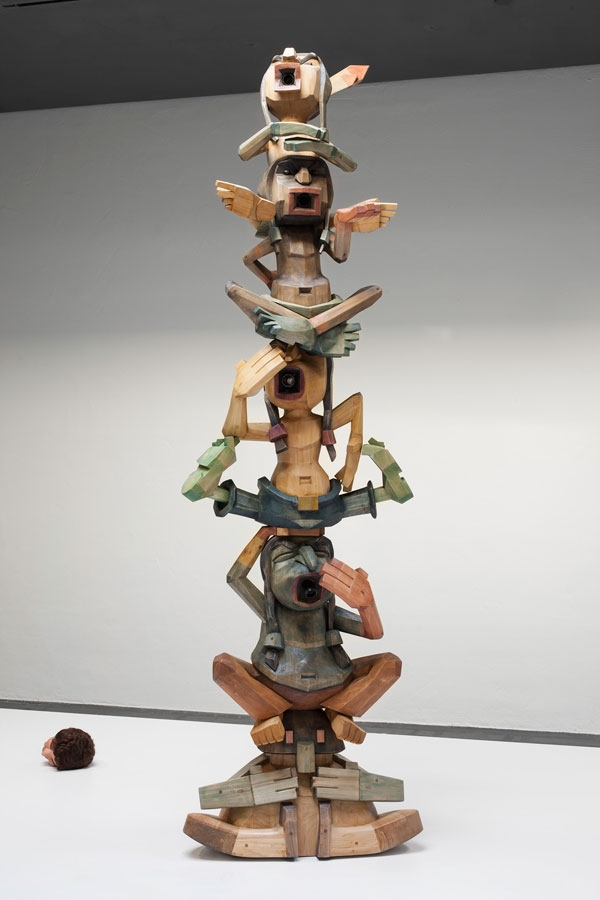4 March – 4 September 2016, Kiasma, Helsinki
Some exhibitions show off their full potential at first sight, while others deliver aspects of themselves over time. Jani Ruscica’s solo show is of the latter type. The concentrated exhibit contents itself with one room in the museum, the walls of which are empty, with a white square podium positioned centrally on the floor like a stage set. Placed on it are six objects that seem either to be remainders of a previous performance, or awaiting activation anew. In fact, they are both. On certain dates only, performers bring the artefacts to life.
The objects (all untitled components of Conversation in Pieces, 2016) include a music box modelled after a punched-tape musical clock featured in the Soviet cartoon film Shkatulka s sekretom (The Box of Secrets) from 1976, in which a boy climbs inside the instrument to discover its inner workings in a psychedelic adventure evoking Alice in Wonderland. Other items comprise a wind instrument more than three metres tall, taking the form of a wooden totem pole inspired by a 1930s Chevrolet advertisement; two marionettes modelled after the Dutch twin brothers and paleontological artists Adrie and Alfons Kennis, who gave the Neanderthal woman Wilma and Ötzi the Iceman their outer appearance for popular consumption; and a materialisation of the fictional electronic instrument Parlamonium described in Walter Benjamin’s radio programme ‘Lichtenberg’ from 1933, translating human speech into celestial music for Lunarians. The artist’s self-portrait, made by a caricaturist sculptor and activated by a ventriloquist, also forms part of the ensemble.
The exhibition title alludes to the ‘conversation pieces’ popular in the eighteenth century: intimately scaled paintings in which figures are depicted in sociable dialogue, often outdoors, such as Antoine Watteau’s fêtes galantes. The paintings’ function was to point to interpersonal relationships and the socially determining forms of life. In Ruscica’s exhibition, the objects themselves come to life through disconnected anecdotes rather than coherent dialogue, similar to the illogical progressions in Luigi Pirandello’s metatheatrical play Six Characters in Search of an Author (1921), which thematises the relationship between the author, his characters and the actors. Yet while the play and genre paintings negotiate the relationships between people, in Ruscica’s show the artefacts themselves have become animate intermediaries that function as placeholders for social relations – they are now fetishes, soulful objects that are sufficiently complex to be the centre of conversation.
Ruscica’s exhibition is the materialisation of a series of ideas, and just as history does not unfold as a linear narrative, it manifests the spatiotemporal gaps, non sequiturs and occasional conflations between them. The show distances itself from the notion that things as such exist, no matter how discussed or fetishised they are, demonstrating instead that they are only created through interactive relationships. It simultaneously highlights how things dialectically structure our field of possible actions, analogous to Michel Foucault’s ‘government of things’, which the philosopher conceived as systematised modes of power. Ruscica’s performative objects pinpoint how our location in the world is construed and changed by the objects surrounding us, while – like Pirandello’s play – calling on us to continuously review the act of interpretation. And so over time, Ruscica’s initially demure exhibition unfolds a nonlinear narrative about the absurdity of human history and the role of objects in its writing and interpretation.
This article was first published in the May 2016 issue of ArtReview.
